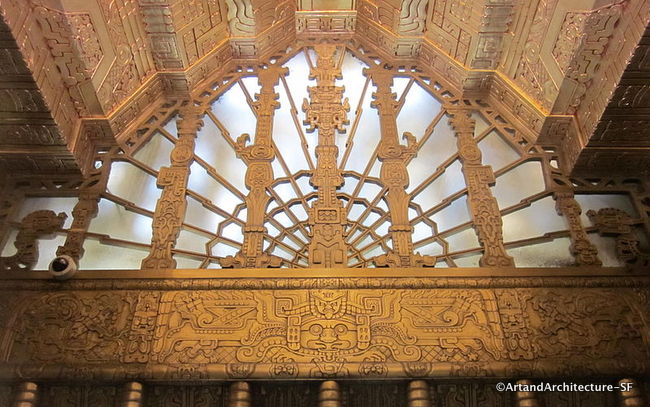 450 Sutter Street is San Francisco’s monument to the Mayan Revival branch of Art Deco.
450 Sutter Street is San Francisco’s monument to the Mayan Revival branch of Art Deco.
Art Deco draws on a variety of sources including Art Nouveau, Cubism and the American Arts and Crafts Movement. Art Deco celebrates the technological wonders of the early 20th century, the frivolities of the roaring twenties, and the hard times of the Great Depression.
Art Deco is commonly divided into three related design trends: Streamline Moderne, Classical Moderne and Zigzag Moderne. Zigzag, represented by angular patterns and stylized geometry, flourished in large cities and was primarily used for public and commercial buildings.
The Mayan Revival (also called neo-Mayan) was one of the facets of Zigzag Moderne. Mayan Revival was used primarily in the 1920s and ’30s. Although it was named “Mayan,” it drew on the motifs of many of the Meso-American cultures, such as Mexica and Aztec.
*
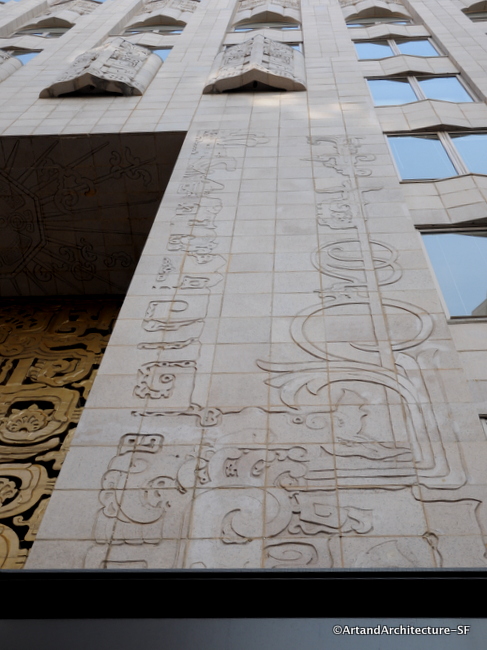 450 Sutter Street, completed in 1929, was designed by James Rupert Miller and Timothy L. Pflueger. A steel curtain-wall building, 450 Sutter broke from tradition with the building’s skin design. Miller and Pflueger covered the 26 floors with heavy Mayan Revival style patterns-undulating verticals of ornamented terracotta run from the first floor to the roof. The addition of horizontal bands of windows adds to the overall effect of richness and complexity. The street level and entry are cast in aluminum. In the lobby, cast bronze alternates with Burgundy/Levanto marble.
450 Sutter Street, completed in 1929, was designed by James Rupert Miller and Timothy L. Pflueger. A steel curtain-wall building, 450 Sutter broke from tradition with the building’s skin design. Miller and Pflueger covered the 26 floors with heavy Mayan Revival style patterns-undulating verticals of ornamented terracotta run from the first floor to the roof. The addition of horizontal bands of windows adds to the overall effect of richness and complexity. The street level and entry are cast in aluminum. In the lobby, cast bronze alternates with Burgundy/Levanto marble.
The building was designed and built for dental salesman Francis Edward Morgan Jr. at a cost of $5 million (including the land). The building was built specifically to house doctors’ and dentists’ offices. According to advertisements, offices could be custom outfitted with electrical and plumbing as the tenant needed. Rents began at $50 a month for three rooms and $100 a month for five. At the time of its construction, it was not only the second tallest building in San Francisco, but said to be the largest medical office building in the world.
*
 The unusual motifs and ornamentation of this grand building received mixed reviews at the time of its opening. The San Francisco Chronicle quieted any discord with the following 1929 review:
The unusual motifs and ornamentation of this grand building received mixed reviews at the time of its opening. The San Francisco Chronicle quieted any discord with the following 1929 review:
“Speculation has been rife as to the meaning of these graceful symbols, but their meaning is negligible-they justify themselves by being graceful and attractive. They give the front of the building just enough feeling of movement to emphasize the general vitality of a severe but thoroughly virile design. They tell the passerby any story he chooses to read into them-and that is poetry.”
450 Sutter was one of the last great skyscrapers to be built in San Francisco in the first half of the century.
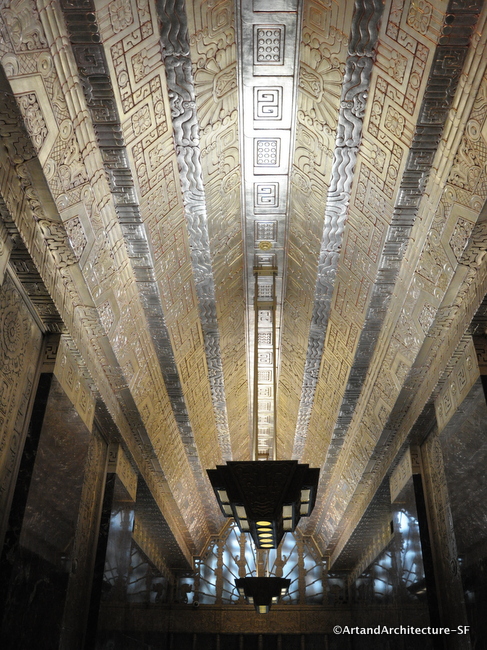 Cast bronze and cast aluminum lobby ceiling
Cast bronze and cast aluminum lobby ceiling
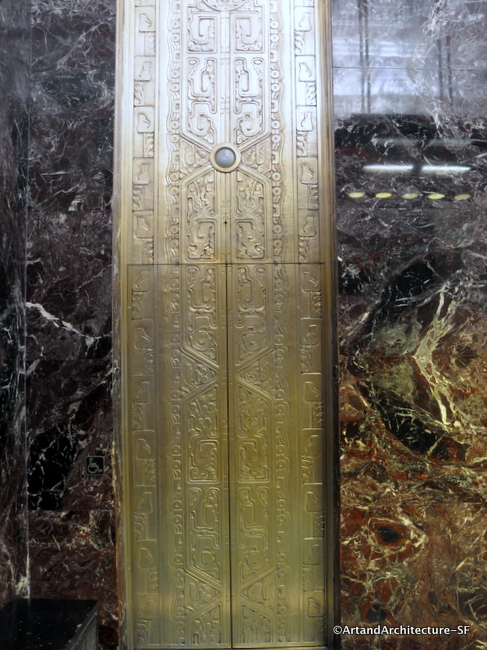 Cast aluminum elevator doors surrounded by burgundy/levanto marble
Cast aluminum elevator doors surrounded by burgundy/levanto marble
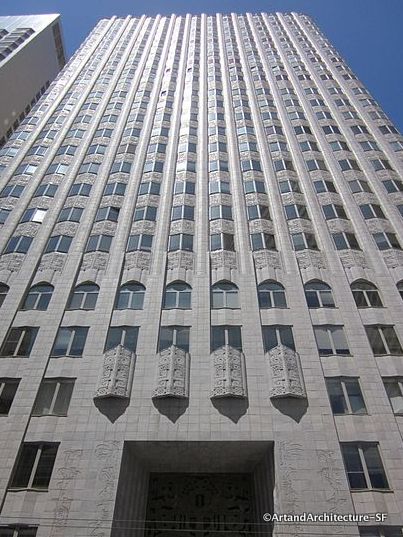

Very nice photos of one of my favorite buildings.
By way of contrast, you may find the story of this little building interesting: http://wp.me/paORo-2GL
I’m in awe!
I always thought this building had one of the most beautiful exteriors. My orthodontist’s office used to be here.
I don’t know this building but vow to make a pilgrimage to see it in person. The Mayan theme can again be celebrated now that the world hasn’t ended. Let’s hear it for the next b’ak’tun.
I’m a big fan of Art Deco and I simply LOVE this!